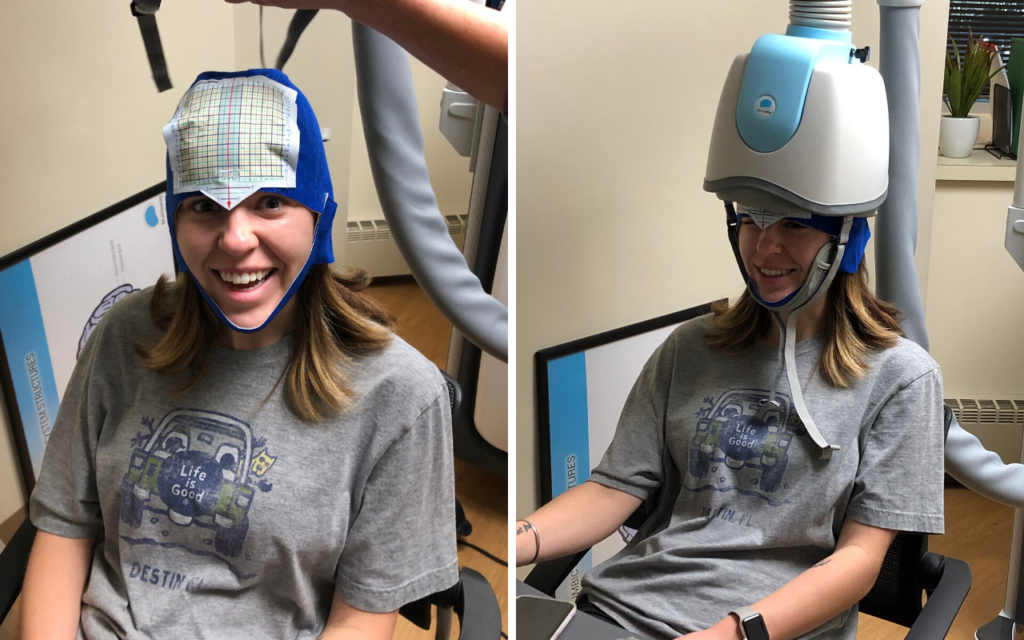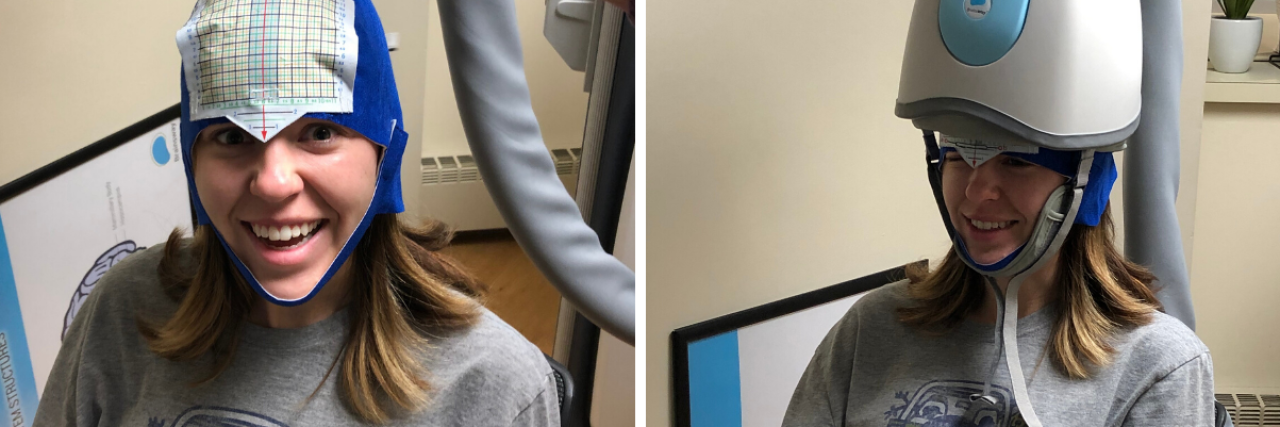If you’ve never heard of TMS therapy, you’re not alone. I had no idea what it was until speaking with my psychiatrist. TMS stands for transcranial magnetic stimulation. According to Harvard Medical School, TMS is a treatment option for depression by utilizing magnetic stimulation to the central nervous system. For those of us who aren’t doctors, this is how it was explained to me.
When you have a mental disorder, like depression, your brain works differently than others. The synapses in your brain are part of the reason you feel the way you do. If your synapses are “asleep or misfiring,” you think otherwise. Mental disorders, like depression, prevent your synapses from firing correctly. Due to this, you feel all the things depression brings. What TMS therapy does is stimulate those synapses.
Many people jump to the conclusion that TMS therapy is like electroconvulsive therapy (ECT), also known as shock therapy. There is a considerable difference between the two. ECT requires anesthesia and triggers a brief seizure. TMS therapy is completely non-invasive, requires no sedation, and lasts only 20 minutes.
After further research and talking with my doctor, we decided I would be the right candidate since talk therapy and medication wasn’t relieving me of my symptoms. My treatment plan was going to be six weeks long, five days a week. I would go every day, Monday through Friday, for 20 minutes to receive TMS. My treatment began in November, and I kept a log about how I felt, how the treatment works and more. This is my experience.
On my first day of treatment, I was excited and scared all at the same time. I had no idea what to expect. When I got there, I was given a cap to wear that goes underneath the helmet. My doctor had to “map my brain,” meaning finding the best spot to administer the magnetic waves. The most bizarre part of my entire treatment was this part. To do that, he had to apply waves to different parts of my brain. He did so by pushing a button on the machine and I felt it through my helmet. If my finger or face twitched, that meant my synapses were working and firing correctly. Therefore, that wasn’t the exact spot. Feeling the right side of my face and right-hand twitch with absolute zero control was the strangest feeling in the world. It did not hurt, but being out of control makes me anxious. Once we found the spot, it was smooth sailing for the next 30 days.
Here is a picture of my cap and machine.

I did not notice the effects immediately when I was going through the treatment, but looking back on how I felt each day, it was evident how much it was helping me. Within the first week, I started feeling the benefits.
Week One: I felt a bit of pain in my jaw due to the helmet and waves. When you feel the waves, your jaw clenches and your temple tingles in a non-painful way. I also felt exhausted after treatments and often needed a nap before moving on with my day. The only adjustment to make was to the clenching and tingles. All of these were minor and to be expected.
Week Two: I noticed that on the weekend, when I was not receiving treatment, I felt a shift in my mood. For example, I felt incredibly alone like I had no friends and like I was returning to my depressive state.
Week Three: I felt a bit more motivated this week and noticing the days I miss a treatment. Overall, feeling good.
Week Four and Five: My psychiatrist had me fill out a questionnaire this week. I didn’t realize it was the same one I filled out when I first went. It is a standard depression questionnaire, and essentially the higher you score, the worse off you feel. I started at 18, so not feeling well at all. By weeks four and five, I realized my score was down to a 4! I felt that much of a change.
Week Six: My last week! Honestly, I was sad about ending my treatment. I got to spend every day with two amazing ladies who sat with me during my treatment every morning, and I genuinely miss them! By the time this last treatment ended and I finished my weaning-off treatments, I was down to a 1 on my scale.
I honestly had no idea how much my depression was weighing on me. When I first thought about doing this treatment, I thought there was no way I was “that bad.” Looking back at the beginning, my depression has always been there. I had my good and bad days, as anyone does, but my depression has felt like a rock sitting heavy on my chest. I always found it hard to motivate myself and was still tired. At times, I felt like I couldn’t get out of bed, do chores or anything else. Since my treatment, I’ve felt most if not all of those feelings go away. I feel a weight has been lifted on my chest, and I can breathe. I never knew something so different could make me feel the way I do now.
Overall, my experience with TMS was a positive one. I feel a change in how I think. I still feel my anxiety, but it is no longer turning into long episodic panic attacks. I know this is something I will most likely live with forever, but this new treatment has been so right for me. If you are curious about finding a doctor in your area who practices TMS, check out this link here. If you’re tired of your depression running your life, and you’ve tried everything, check out TMS therapy!
Images via contributor

